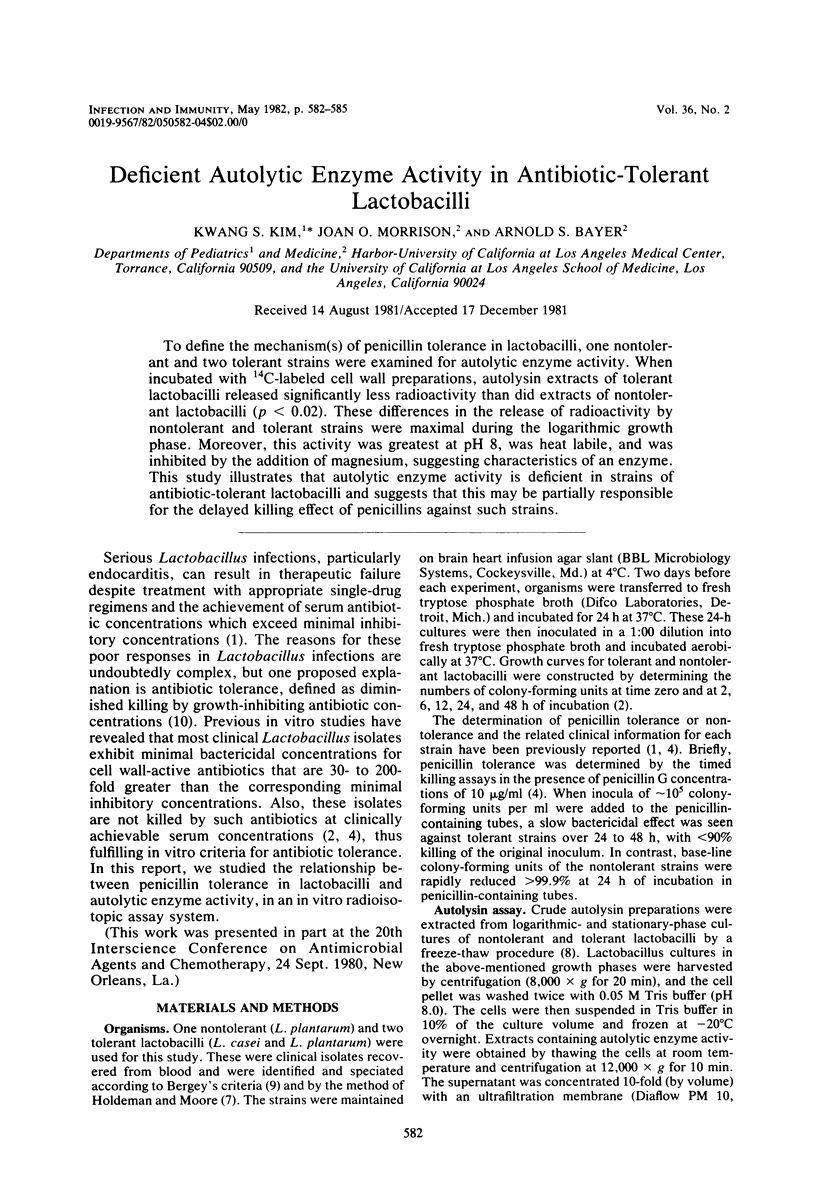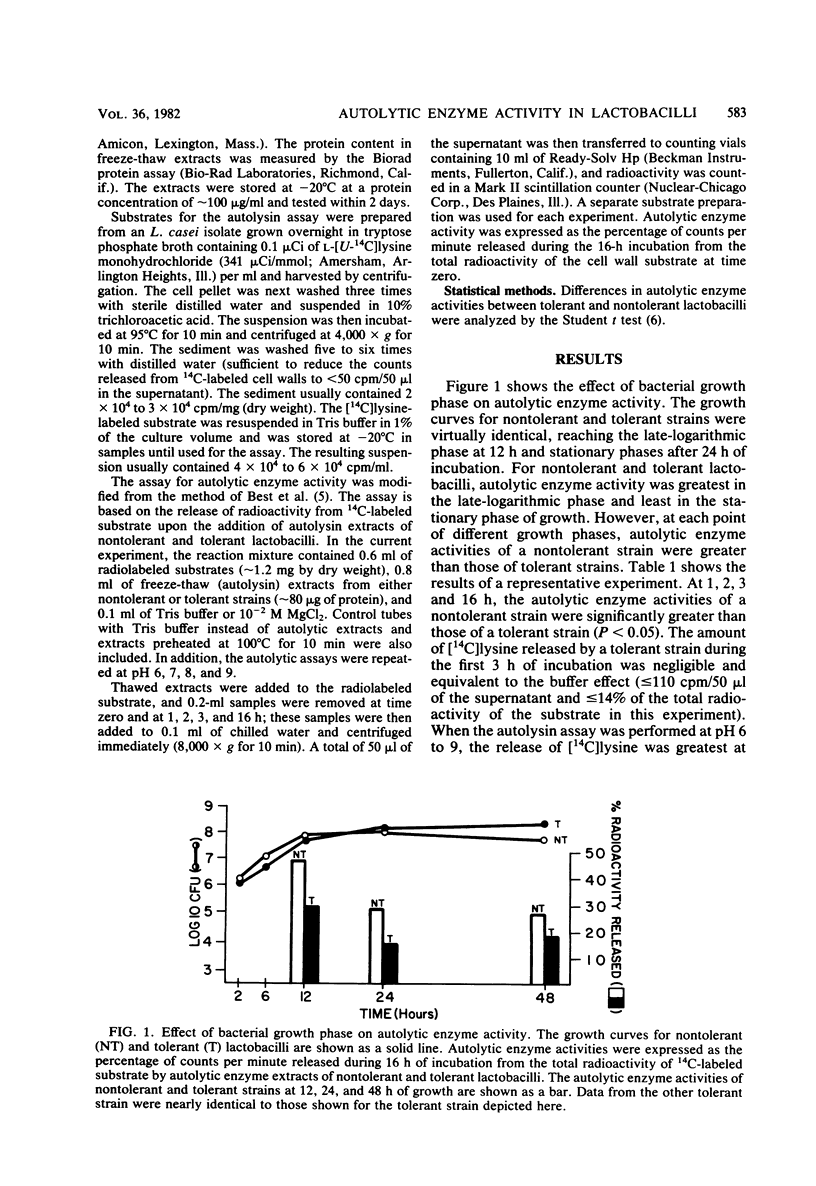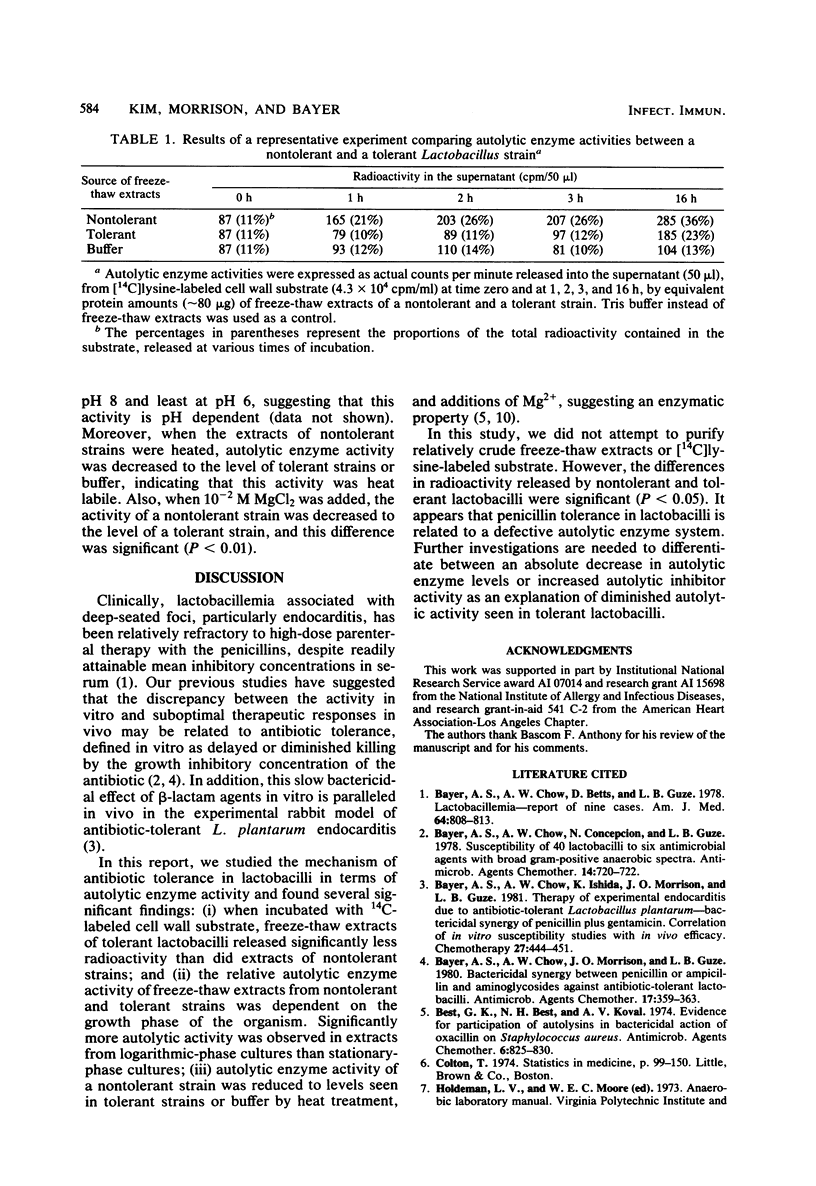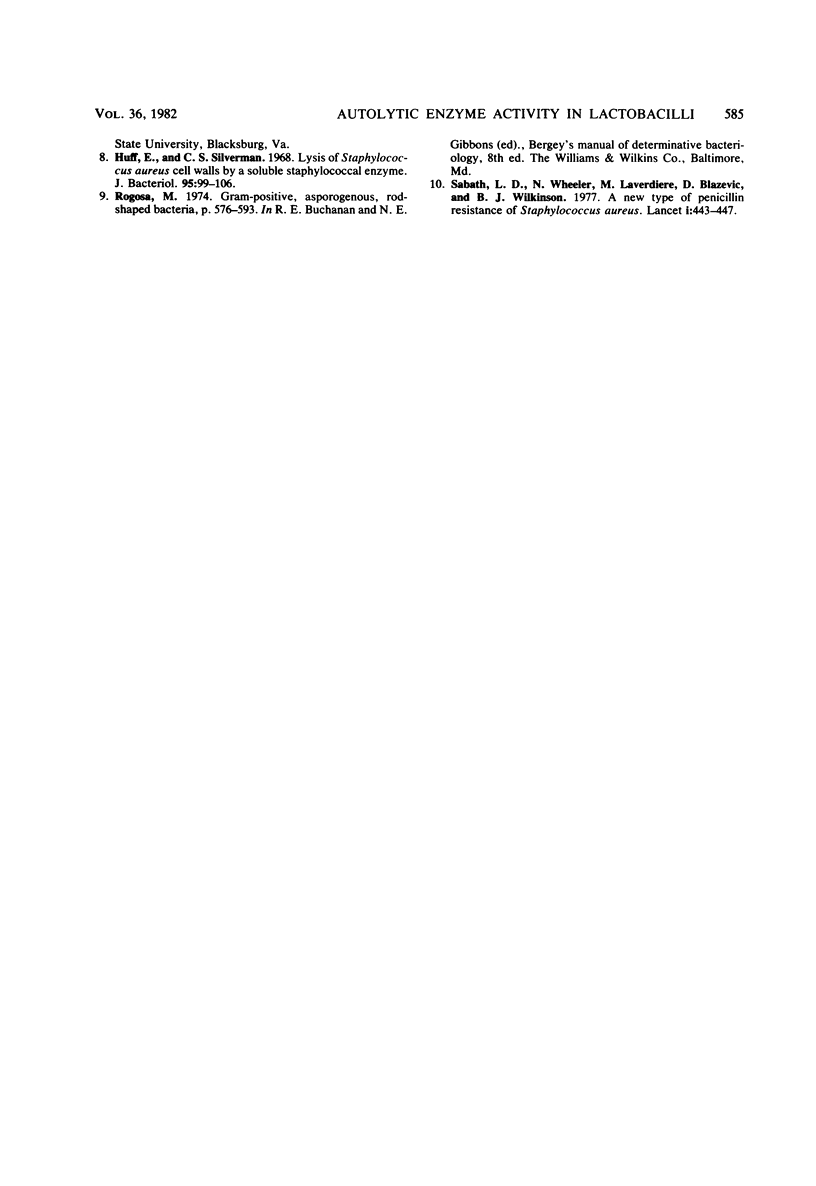Abstract
To define the mechanism(s) of penicillin tolerance in lactobacilli, one nontolerant and two tolerant strains were examined for autolytic enzyme activity. When incubated with 14C-labeled cell wall preparations, autolysin extracts of tolerant lactobacilli released significantly less radioactivity than did extracts of nontolerant lactobacilli (p less than 0.02). These differences in the release of radioactivity by nontolerant and tolerant strains were maximal during the logarithmic growth phase. Moreover, this activity was greatest at pH 8, was heat labile, and was inhibited by the addition of magnesium, suggesting characteristics of an enzyme. This study illustrates that autolytic enzyme activity is deficient in strains of antibiotic-tolerant lactobacilli and suggests that this may be partially responsible for the delayed killing effect of penicillins against such strains.
Full text
PDF



Selected References
These references are in PubMed. This may not be the complete list of references from this article.
- Bayer A. S., Chow A. W., Betts D., Guze L. B. Lactobacillemia--report of nine cases. Important clinical and therapeutic considerations. Am J Med. 1978 May;64(5):808–813. doi: 10.1016/0002-9343(78)90521-1. [DOI] [PubMed] [Google Scholar]
- Bayer A. S., Chow A. W., Concepcion N., Guze L. B. Susceptibility of 40 lactobacilli to six antimicrobial agents with broad gram-positive anaerobic spectra. Antimicrob Agents Chemother. 1978 Nov;14(5):720–722. doi: 10.1128/aac.14.5.720. [DOI] [PMC free article] [PubMed] [Google Scholar]
- Bayer A. S., Chow A. W., Ishida K., Morrison J. O., Guze L. B. Therapy of experimental infective endocarditis due to antibiotic-tolerant Lactobacillus plantarum-bactericidal synergy of penicillin plus gentamicin. Correlation of in vitro susceptibility studies with in vivo efficacy. Chemotherapy. 1981;27(6):444–451. doi: 10.1159/000238014. [DOI] [PubMed] [Google Scholar]
- Bayer A. S., Chow A. W., Morrison J. O., Guze L. B. Bactericidal synergy between penicillin or ampicillin and aminoglycosides against antibiotic-tolerant lactobacilli. Antimicrob Agents Chemother. 1980 Mar;17(3):359–363. doi: 10.1128/aac.17.3.359. [DOI] [PMC free article] [PubMed] [Google Scholar]
- Best G. K., Best N. H., Koval A. V. Evidence for participation of autolysins in bactericidal action of oxacillin on Staphylococcus aureus. Antimicrob Agents Chemother. 1974 Dec;6(6):825–830. doi: 10.1128/aac.6.6.825. [DOI] [PMC free article] [PubMed] [Google Scholar]
- Huff E., Silverman C. S. Lysis of Staphylococcus aureus cell walls by a soluble staphylococcal enzyme. J Bacteriol. 1968 Jan;95(1):99–106. doi: 10.1128/jb.95.1.99-106.1968. [DOI] [PMC free article] [PubMed] [Google Scholar]
- Sabath L. D., Wheeler N., Laverdiere M., Blazevic D., Wilkinson B. J. A new type of penicillin resistance of Staphylococcus aureus. Lancet. 1977 Feb 26;1(8009):443–447. doi: 10.1016/s0140-6736(77)91941-9. [DOI] [PubMed] [Google Scholar]


